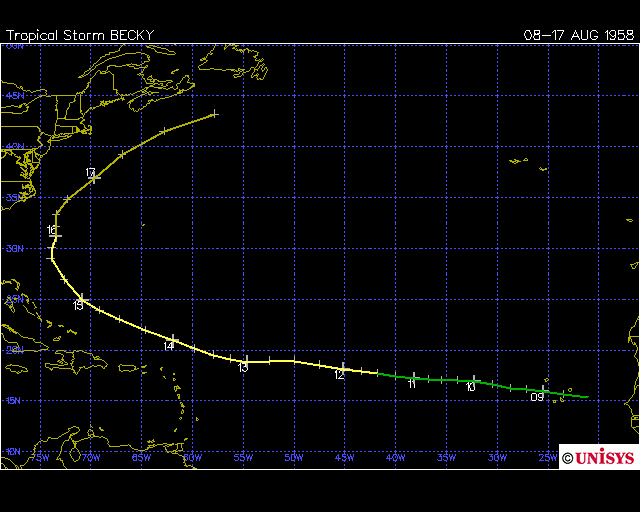
On August 13, 1958, a team of University of Chicago scientists ran a computer forecast model on Tropical Storm Becky as the storm was on-going. Although not used for the official subjective forecast, the computer runs were a “proof of concept” demonstrating that Numerical Weather Prediction was possible for tropical cyclones.
The team, consisting of Akira Kasahara, George Platzman, and Bob Jones, had created a barotropic model in which the vortex of the hurricane was removed from the observations. Jones, assisted by Lester Hubert, worked at the Joint Numerical Weather Prediction Center in Washington, DC, carefully digitizing observations over the Atlantic while excluding any within a certain distance from Becky.

They repeated the effort for three more storms that season and made 17 forecasts in all. The track errors (24 hours – 147 nautical miles [272 km], 48 hours – 274 n.mi. [508 km], 72-hour – 564 n.mi. [1044 km]) were not competitive with the man-made subjective forecasts, but were good enough to encourage continued efforts in computer forecasting.
References
Hubert, L. F. “An operational test of a numerical prediction method for hurricanes”,” Monthly Weather Review Vol. 87 No. 6 (June 1959): p. 222- 230.